Citation (Harvard): Reese, D. (2023) “The Complex Management of the Cubango-Okavango River Basin”, Regional Policy Insights, 1(1): 1-7.
Abstract:
The Okavango Delta is a unique wetland ecosystem in Southern Africa that supports rich biodiversity and human livelihoods. However, the Delta faces threats from local, transnational, and global factors, such as climate change, oil exploration, land use change, and institutional challenges. This paper reviews the management of the Okavango Delta, which involves three countries (Angola, Botswana, and Namibia) and various stakeholders. The paper identifies the main problems and gaps in the existing management plan and proposes recommendations for improving the sustainability and resilience of the Delta and its people. The author suggests that policymakers and stakeholders should: a) adopt a holistic and adaptive approach that considers the complex and dynamic interactions of climate change, hydrology, ecology, and socio-economic factors in the Okavango Basin; b) enhance the cooperation and coordination among the three countries and among different sectors and actors within each country to address the transboundary nature of the Delta and its resources; c) strengthen the capacity and participation of local communities and civil society organizations in the management plan; and d) secure adequate and sustainable funding and support from national governments, regional organizations, international donors, and private sector to implement the management plan and its actions.
Keywords: Okavango Delta, Southern Africa, transboundary water management, climate change adaptation, biodiversity conservation, sustainable development
The Cuito and Cubango Rivers originate in the highlands of Angola, merge, and then cross two national borders before culminating in the largest inland river delta in the world, the Okavango Delta. Declared a World Heritage site in 2014, the 16,800 km² Okavango Delta “jewel of the Kalahari” hosts a globally unique assemblage of wetland biodiversity with more than two thousand vertebrate species (Ramberg, 2006). While the river delta itself is situated within the borders of Botswana, its reliance on the upstream waters from Angola that flow through Namibia calls for a trans-boundary management approach. Yet, this tri-country management is complicated from a policy perspective, as indicated by more than two decades of policymaking.
Management of the Okavango Delta was officially designated in 2008 in the Okavango Delta Management Plan (ODMP), which pledged “to integrate resource management for the Okavango Delta that will ensure its long-term conservation and that will provide benefits for the present and future well-being of the people through sustainable use of its natural resources.” (ODMP, 2008). Economic activities that rely on the Cubango-Okavango River Basin include tourism services and the accompanying infrastructure of airstrips and retail; formal employment with government natural resources departments; and artisanal collection of fish, firewood, food plants, medicinal plants, honey, papyrus, and clay (Hambira, 2011).
Building on the tenets of the Ramsar Convention ratified by Botswana in 1997, the ODMP was developed by the Botswana Department of Environmental Affairs through the collaboration of many national stakeholders representing branches of government, regional and local authorities, and tribal administration. It was also endorsed by the governments of both Angola and Namibia via a multinational commission – the Permanent Okavango River Basin Commission (OKACOM) – established in 1994. US$8.3 million was invested over four years to strengthen OKACOM’s capacity to oversee management of biodiversity conservation and participatory community governance of river basin resources. In essence, the process was a model for international cooperation to ensure the sustainability of a transboundary resource.
However, a 2013 mid-term review prepared for OKACOM revealed little progress on the management plan during its first five years (Chemonics, 2013). Consultations with stakeholders across levels (community members to government officials) revealed a consensus that an overly narrow focus on biodiversity had fallen short of a comprehensive view. An anticipated cultural shift towards protecting biodiversity had therefore not happened. Most of the planned biodiversity actions were never implemented because of the perception that it failed to consider ongoing changes to the whole watershed, including those prompted by actions beyond Botswana’s borders. In other words, despite the blessing of OKACOM, the proposed management plan lacked the bigger picture perspective needed to motivate participation.
The complexity of the transnational management of the Okavango Delta in part results from its hydrology. A flood-pulse system, the Delta relies mostly on water that originates in the Angola Highlands, and secondarily on local rainfall that is strongly seasonal. Once floodwaters reach the Delta, the nearly flat topography makes for a slow trickle, with water taking several months to travel the approximately 250 km across the Delta (Steudel et al., 2013). As water flows across the flat, hot expanse, evaporation rates are on the range of 96-98 percent. Of the 16 billion cubic meters of water that enter the Delta each year, only about 1 billion remain on the surface (Helfter, 2020). This remaining water is an essential supply to impoverished communities living in the Delta that lack access to a central water supply. (Moses and Hambira 2018). Local rainfall is not sufficient to alleviate regional drought conditions (Konecky, 2016).
Living within the River Basin from Angola to Botswana are some of the most remote and least developed populations, totaling about one million people, in those countries. A 2019 multisectoral analysis of the Cubango-Okavango Basin spearheaded by the World Bank revealed the vulnerability of the Basin inhabitants as a limitation in achieving sustainable management of the watershed. On top of the already fragile dependence on an ephemeral flood-pulse system, people living in the watershed are facing challenges related to increasing populations, human land uses, and climate changes. (World Bank, 2019). Additional pressures on the Okavango’s waters come from outside of the Delta. Broadly, the water resources of Southern Africa are demanded for projected sustainable and social development of the region.
Climate change has been identified as one of the threats to establishing sustainable resource management in the Okavango Delta and elsewhere in Southern Africa (OKACOM, 2023). A study published in 2016 noted reductions in the quantity of water reaching the Delta from human-caused climate change; higher temperatures boost evaporation from the watershed during the long transit of water to Botswana (Konecky et al. 2016). A 2018 study to predict the effects of climate change on the Okavango Delta’s water resources found significant positive trends in evapotranspiration (Moses et al. 2018). An earlier modeling study (Hambira, 2011) estimated reduced inflow of water into the Delta as a result of increasing temperatures.
The scientific consensus is that the Okavango Delta is experiencing declining water quality, altered flow regimes, and threats to biodiversity based on local, transnational, and global influences. Of those, climate models have shown that global climate change trumps local human impacts by changing the systemic flow regimes of the entire Basin (Burg, 2007). Looking at the sustainable development goals set forth in the Okavango Delta Management Plan, in the future requires an approach that takes climate change into account. As temperatures rise, semi-arid ecosystems like the Okavango Delta are projected to become increasingly dry with deeper impacts to wildlife and human survival.
Curiously, climate change is not listed on the 2021 UNESCO State of Conservation Report for the Okavango Delta (UNESCO, 2021). The focus is on the growing list of impacts within the river basin, which include granting of oil exploration licenses in both Botswana and Namibia; veterinary fences installed to keep wildlife from interacting with livestock; non-compliant wastewater generating facilities; lack of wildlife monitoring programs; and invasive species.
The continuing challenge – fifteen years after the Okavango Delta’s first formal management plan – of achieving sustainable management of this rare and critical resource, is testimony to the complications of managing the many resources that serve the needs of people and wildlife.
Many institutional factors in the Okavango Delta management equation aggravate the already complex problem of reliance on the inherent river basin flow dynamics. In its 2008 report, the Botswana Department of Environmental Affairs cited multiple human foibles that stand in the way of progress, such as poor collaboration between institutions; conflicts within communities; delayed policy enactments; and fuzzy institutional roles in enforcement of policies. Similarly, a final evaluation of a 2010-2014 UNDP-funded project to build capacity for sustainable use of Okavango biodiversity assets identified problems such as frequent staff turnover, limited local financial resources, and insufficient participatory engagement (UNDP, 2016).
Going forward, the Okavango will be in the hands of a new Okavango Delta Management Plan for 2021-2028, recently reviewed by the Okavango Research Institute for Botswana’s Ministry of Environment, Natural Resources, and Tourism. The updated plan recognizes the Okavango as a multi-layered landscape with multiple stakeholders and mandates under multiple local to international organizations, including community-based organizations, Botswana government departments, a Department of Water Affairs that handles international waters, the OKACOM, and a Department of National Museum and Monuments that ensures implementation of the World Heritage Convention. (Dhliwayo, 2021).
One hopes that the many actors in the management of the Okavango Delta achieve sustained progress in supporting human livelihoods while protecting the natural ecosystems in this next round of goal setting and investments.
References
Burg, V. (2007) Climate Change Affecting the Okavango Delta. Master’s Thesis, Swiss Federal Institute of Technology Zurich (ETH Zurich).
Chemonics International (2013) Mid-Term Review and Gap Analysis of the Okavango Delta Management Plan. Prepared for review by USAID, OKACOM, and SADC. Gaborone: Chemonics International.
DEA (2008) Okavango Delta Management Plan. Gaborone: Department of Environmental Affairs.
Dhliwayo, M. (2021) Visualizing the Okavango Delta MIDA Landscape, a demonstration for the Okavango Delta Management Plan 2021-2028. International Journal of Geospatial and Environmental Research, 8(1), 1-18.
Hambira, W.L. (2011) Screening for Climate Change Vulnerability in Botswana’s Tourism sector in a Bid to Explore Suitable Adaptation Measures and Policy Implications: A Case Study of the Okavango Delta. International Journal of Tourism Policy, 4(1), 51-65.
Helfter, C., Gondwe, M., Murray-Hudson, M., and Skiba, U. (2020) Methane and Carbon Dioxide Emissions from Two Contrasting Wetlands in the Okavango Delta, Botswana. EGU General Assembly 2020, Online, 4–8 May 2020.
Konecky, B., Noone, D., and Gondwe, M. (2016) Impacts of Climate Change on Rainfall, Seasonal Flooding, and Evapotranspiration in the Okavango Delta, Botswana. AGU Fall Meeting 2016, San Francisco, USA, 12–16 December 2016.
Moses, O. and Hambira, W.L. (2018) Effects of Climate Change on Evapotranspiration over the Okavango Delta Water Resources. Physics and Chemistry of the Earth, Parts A/B/C, 105, 98-103.
ODMP (2008) Okavango Delta Management Plan. Gaborone: Department of Environmental Affairs.
OKACOM (2023) The Permanent Okavango River Basin Water Commission (OKACOM). Available at: https://www.okacom.org/
Ramberg, L., Hancock, P., Lindholm, M., Meyer, T., Ringrose, S., Sliva, J., Van As, J. and VanderPost, C. (2006) Species diversity of the Okavango Delta, Botswana. Aquatic Sciences, 68(3), 310-337.
Steudel, T., Göhmann, H., Mosimanyana, E., Quintino, M., Flügel, W.-A. and Helmschrot, J. (2013) Okavango Basin – Hydrology. Biodiversity & Ecology. In: Oldeland, J., Erb, C., Finckh, M. and Jürgens, N. (eds.). Environmental Assessments in the Okavango Region, 19-22.
UNDP (2016) Terminal Evaluation of PIMS 2028 BD FSP: Building Local Capacity for Conservation and Sustainable Use of Biodiversity in the Okavango Delta (BioKavango). New York: United Nations Development Programme.
UNESCO (2021) State of Conservation (SOC 2021) Okavango Delta (Botswana). Available at: https://whc.unesco.org/en/soc/4132
World Bank (2019) The Cubango-Okavango River Basin Multi-Sector Investment Opportunities Analysis: Summary Report. Washington, DC: World Bank Group. Document Number W19022.
Dr. Devin Reese is an experienced biologist who serves as an Environmental Fellow at the Centre for Regional Integration and as the Executive Editor of the Natural History magazine. She has completed a postdoctoral programme at the American Association for the Advancement of Science, a PhD in Ecology from U.C. Berkeley and a BA in Animal Behavior from Harvard University.











